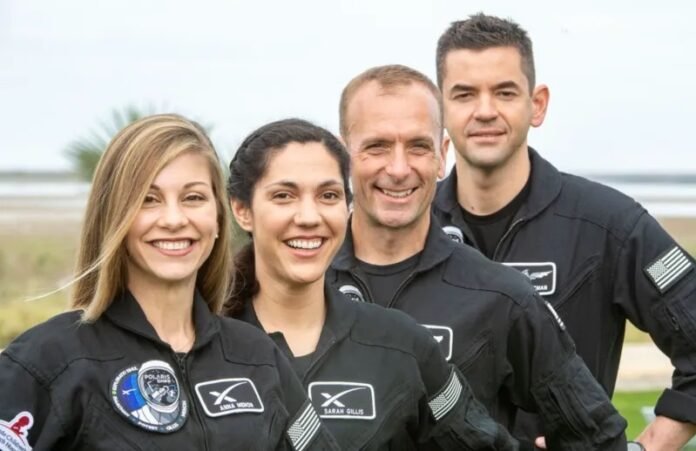In a groundbreaking achievement, billionaire Jared Isaacman and SpaceX engineer Sarah Gillis became the first non-professional astronauts to perform one of the most challenging maneuvers in space—a private spacewalk. The spacewalk, funded by Isaacman himself, marked a significant departure from the domain of government space agencies and demonstrated the growing role of private companies in space exploration.
On the morning of the spacewalk, anticipation ran high as Isaacman and Gillis prepared to exit their SpaceX Dragon spacecraft. At 11:52 BST, Isaacman was the first to step out, wearing a specially designed suit, followed by Gillis, who emerged 15 minutes later. Their spacewalk, 435 miles (700 km) above Earth, offered a breathtaking view of the planet below. Isaacman captured the moment perfectly, saying, “Back at home we all have a lot of work to do, but from here Earth sure looks like a perfect world.”
The mission, known as Polaris Dawn, was not only Isaacman’s third trip to space but also a major milestone for SpaceX. Both Isaacman and Gillis floated outside the Dragon capsule, narrating their experience as they tested the performance of their extravehicular activity (EVA) suits. Unlike traditional government-funded spacewalks, which involve astronauts exiting through an airlock, this walk was made without such a buffer, exposing the entire capsule to the vacuum of space.
The lead-up to this spacewalk was meticulous. The crew spent two days “pre-breathing” to avoid decompression sickness, a condition caused by rapid pressure changes. The spacecraft was depressurized to match the conditions of space, ensuring the safety of the crew during the walk. The walk, originally scheduled for early Thursday, was postponed due to last-minute concerns, adding to the growing excitement surrounding the mission.
Isaacman and Gillis’ mission was unique in more ways than one. According to Dr. Simeon Barber, a research scientist at the Open University, this spacewalk took a “very different approach” compared to previous ones performed from the International Space Station (ISS). He noted that while NASA missions use airlocks, the SpaceX Dragon capsule was fully exposed to the space environment, a significant shift in methodology. “It’s really exciting and shows again that SpaceX is not afraid to do things differently,” Barber commented.
The spacewalk occurred at a height of 435 miles, higher than any previous spacewalk in history. In addition to this feat, the astronauts used innovative EVA suits, which were an upgrade from SpaceX’s earlier intravehicular activity (IVA) suits. These EVA suits featured a heads-up display in the helmet, allowing Gillis to read out data during the walk. The suits, designed to be flexible and comfortable, were also used during launch and landing, eliminating the need for multiple types of suits on the mission.
The Polaris Dawn mission set another record by having four astronauts wear the EVA suits simultaneously, the most people ever in the vacuum of space at once. This mission, which launched on Tuesday, aimed to reach up to 870 miles (1,400 km) in orbit—further than any human space mission since NASA’s Apollo program in the 1970s.
Government space agencies like NASA are increasingly relying on private companies to transport their astronauts, hoping to reduce the high costs of space travel. Entrepreneurs like Jared Isaacman and SpaceX founder Elon Musk are at the forefront of this movement, expanding private space exploration and paving the way for more non-professional astronauts to venture into space.
Although the cost of such missions remains prohibitive, the success of the Polaris Dawn mission represents a major symbolic step forward in making space travel more accessible. As private spacewalks like this one become more common, the dream of ordinary citizens exploring the stars may one day become a reality.
This mission not only showcased SpaceX’s technical capabilities but also marked a turning point in the future of space travel, where the skies are no longer the exclusive domain of government astronauts but open to visionary entrepreneurs.


